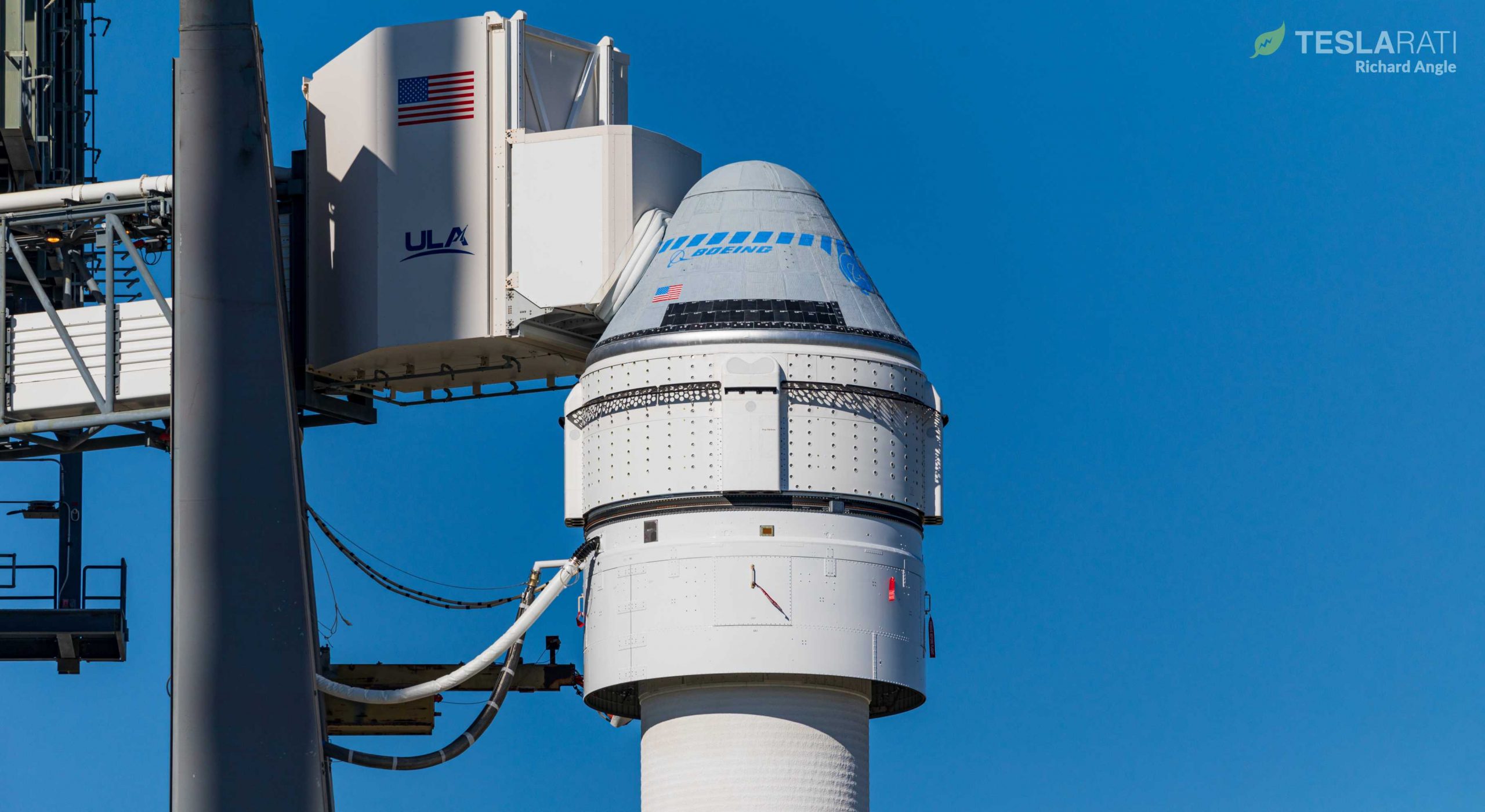
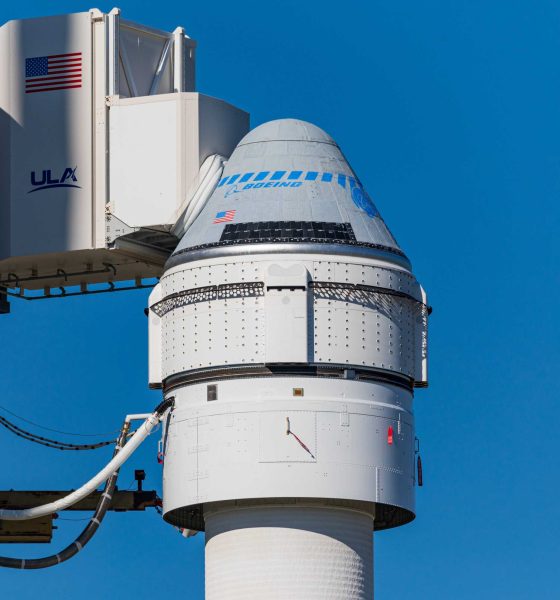
News
SpaceX and Boeing's crewed capsule race heats up with Starliner's Friday test flight
The first week of December kicked off a flurry of productivity for NASA Commercial Crew Program partners SpaceX and Boeing. Ahead of crewed astronaut flight in 2020, both partners are working toward the completion of integral test flights of the two crew capsules that will carry astronauts to orbit from American soil for the first time since 2011.
While SpaceX nailed down a firm targeted launch date for the upcoming in-flight abort (IFA) test of its Crew Dragon capsule, Boeing and launch provider United Launch Alliance (ULA) worked to complete what is known as an Integrated Day of Launch Test (IDOLT) – a standard procedure ahead of human-rated spaceflight.
This type of rehearsal was routinely completed during the space shuttle era – then referred to as Terminal Countdown Demonstration Tests. The IDOLT was a final major step ahead of the orbital flight test (OFT) of the Atlas V and Boeing Starliner capsule. The upcoming flight test will closely reflect procedures completed by SpaceX with the Falcon 9 and Crew Dragon capsule during its version of the orbital flight test referred to as Demonstration Mission – 1 which previously occurred in March of 2019.
Earlier in the week, ULA rolled out its mighty Atlas V rocket topped off with the Starliner crew capsule from the Vertical Integration Facility to the Space Launch Complex – 41 launchpad at Cape Canaveral Air Force Station. Once at the launchpad, the Crew Access Arm featuring a “white room” at the end that secures to the Starliner capsule to allow astronaut entrance was swung to the capsule for the very first time.
On Wednesday, December 4th, ULA and Boeing teams prepared to support the IDOLT, while SpaceX teams worked nearby at Space Launch Complex – 40 to support the CRS-19 resupply mission to the International Space Station. The simultaneous preparations resulted in the unique opportunity to view both rockets slated to support crewed astronaut flights in 2020 on launchpads and essentially prepared for flight.
While SpaceX ultimately successfully launched and landed a brand new Falcon 9 booster during the CRS-19 mission on Thursday, December 5th, a scrubbed attempt meant a one-day delay of launch which in turn resulted in a one-day delay for Boeing and ULA’s IDOLT and wet dress rehearsal (WDR).
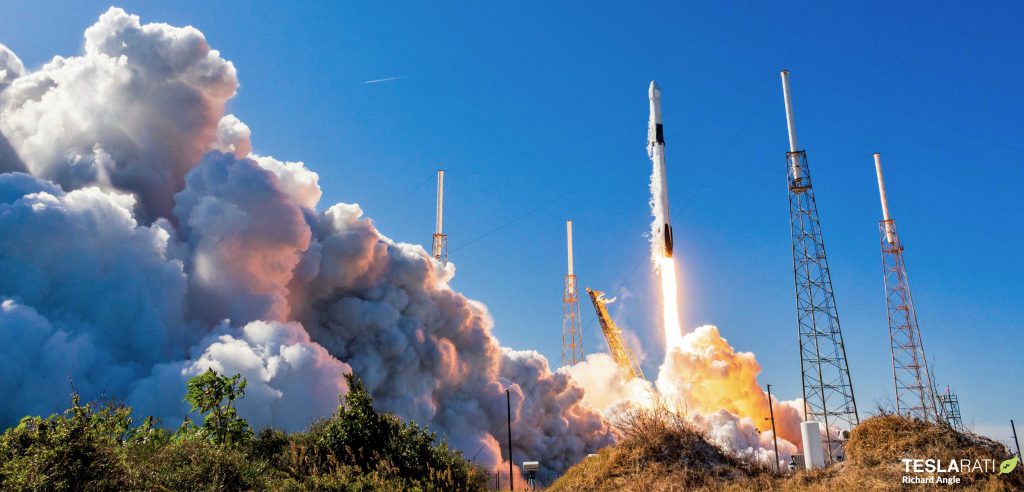
The scrubbed launch essentially tied up range operations of the 45th Space Wing so that the area around the active launch pads – air, sea, and land – could not be secured for both events to take place on the same day. As the CRS-19 launch was an active operation for both SpaceX and NASA, it took precedence over ULA and Boeing’s rehearsal. Instead, Thursday was used to complete other necessary vehicle testing by Boeing and ULA.
Friday’s IDOLT ahead of Starliner’s flight debut for the OFT was a coordinated effort by NASA, Boeing, and ULA teams in multiple locations around the country.
The teams went through actual fueling procedures the Atlas V rocket and Centaur upper stage. Atlas V was filled with a type of rocket-grade kerosene propellant, RP-1, on Wednesday ahead of the IDOLT. The Centaur upper stage fully filled with cryogenic propellants – liquid oxygen (LOx) and liquid hydrogen.
Once fueling had completed Boeing’s “Blue Team” entered the pad to begin their synchronized rehearsal portion of the launch day sequence to prepare and secure the Starliner capsule and astronauts flying aboard.
Once the Blue Team completed all tasks and were evacuated from the pad, flight controllers from NASA’s Johnson Space Center in Houston, TX gave the “GO” command and proceeded with terminal count until reaching T minus-0 at which point the test concluded. The cryogenic propellants were drained and the vehicle was safed to be safely returned to the Vertical Integration Facility where final steps will be taken to prepare for launch.
The next time the teams will all work together in such coordinated fashion this will be on the day of launch. In mid-2020 the teams are expected to work together once again to support the Crewed Flight Test (CFT) which will send NASA astronauts Col. Mike Fincke, Nicole Mann, and Christopher Ferguson.
Until then, however, they will have to settle for the uncrewed test flight. According to ULA president and chief executive officer, Tory Bruno, post-WDR data evaluation and joint flight readiness review conducted by all teams involved are proceeding smoothly. Should all go to plan, the Atlas V and Boeing Starliner OFT will launch at 6:36 am EST on Friday, December 20th.
Check out Teslarati’s Marketplace! We offer Tesla accessories, including for the Tesla Cybertruck and Tesla Model 3.

News
Tesla launches hiring for Robotaxi program in its twentieth country
Overall, the hiring signals Tesla’s aggressive timeline for global dominance in autonomous mobility.

Tesla has launched a hiring initiative for its Robotaxi program in its twentieth country, as the company posted two new jobs in Thailand this week.
Tesla is hiring in Bangkok and Kowloon for the Vehicle Operator position, which is related to data collection, and is the first in Thailand, but the twentieth country overall, as the company tries to expand into other markets.
🚨 BREAKING: Tesla is hiring additional full-time Vehicle Operators in Bangkok, Thailand.
Previous openings were 6-month, part-time roles. These are equivalent to AI Safety Operator roles in the U.S. pic.twitter.com/R6LzoU1bos— Tesla Yoda (@teslayoda) January 5, 2026
Tesla has had active job postings for Vehicle Operator positions in the United States, India, Israel, Taiwan, Germany, the Czech Republic, Hungary, the UK, Finland, Switzerland, Sweden, the Netherlands, Austria, Spain, Norway, Italy, and Turkey in past listings.
These postings are not all currently available, likely because the roles have been filled.
Thailand is the most recent, and broadens the company’s potential path to expanding its ride-hailing program, which is only active in the United States in Austin, Texas, and the California Bay Area, so far.
These roles typically involve data collection, which assists in improving Autopilot and Full Self-Driving operation. Tesla’s self-driving programs utilize real-world data that is accumulated and stored, observing vehicle and traffic behavior, as well as tendencies that are performed by human drivers to help increase safety and overall performance.
Overall, the hiring signals Tesla’s aggressive timeline for global dominance in autonomous mobility. Although the company has several high-profile rivals and competitors in the field, it has established itself as a main player and a leader in the development of autonomous technology, especially in the U.S., as its FSD suite is refined on almost a weekly basis.
The Full Self-Driving suite is available in seven countries and territories currently, including the U.S., Canada, China, Mexico, Puerto Rico, Australia, and New Zealand. Its biggest goal for expansion is currently the European market, where regulatory hurdles have been the main bottleneck prolonging its launch on the continent.
Tesla has performed months of testing in various European countries, including France and Spain, and does have support in some areas from various regulatory agencies. However, the company is hoping to get through this red tape and offer its suite in Europe for the first time, hopefully this year.
News
Tesla China rolls out Model Y upgrades, launches low-interest financing
These strategies are aimed at improving the ownership experience and keeping vehicle pricing competitive in the world’s largest electric vehicle market.

Tesla has rolled out minor updates to the five-seat Model Y in China, upgrading the vehicle’s center display to a higher-resolution 16-inch 2K screen. The electric vehicle maker also introduced attractive financing options, including 7-year low-interest rates, to offset the new purchase tax on EVs.
These strategies are aimed at improving the ownership experience and keeping vehicle pricing competitive in the world’s largest electric vehicle market.
Five-seat Model Y gets larger, better display
With its recent update, all three variants of the five-seat Model Y now feature an upgraded 16-inch 2K resolution center display, which replaces the vehicle’s previous 15.4-inch 1080p panel. This screen was already used in the six-seat Model Y L, and it offered improved visual clarity. Tesla China has also updated the Model Y’s headliner to black, giving the vehicle a sleeker appearance.
Prices of the five-seat Model Y remain unchanged at RMB 263,500, RMB 288,500, and RMB 313,500 for the respective trims. This update enhances the cabin experience as domestic rivals are already adopting high-resolution screens. As noted in a CNEV Post report, some domestic automakers have begun rolling out vehicles equipped with 3K-resolution displays.
New financing offers
Tesla also launched ultra-long-term financing offers for its locally produced models in China, which include the Model 3 sedan, the five-seat Model Y, and the six-seat Model Y L, through January 31, 2026. The 7-year option features an annualized fee rate as low as 0.5%, which is equivalent to 0.98% interest. This is expected to save customers up to RMB 33,479 ($4,790) compared to standard rates.
A 5-year zero-interest plan is also available, and it has been extended to the Tesla Model Y L for the first time. These incentives help offset China’s new 5% purchase tax on New Energy Vehicles (NEVs) in 2026-2027. Some of Tesla’s rivals in China have announced in recent months that they would be covering the purchase tax owed by buyers early this year.
News
Tesla Model Y’s new feature lands driver in hot water from police officer
“He gave me a warning and told me to get it fixed.”
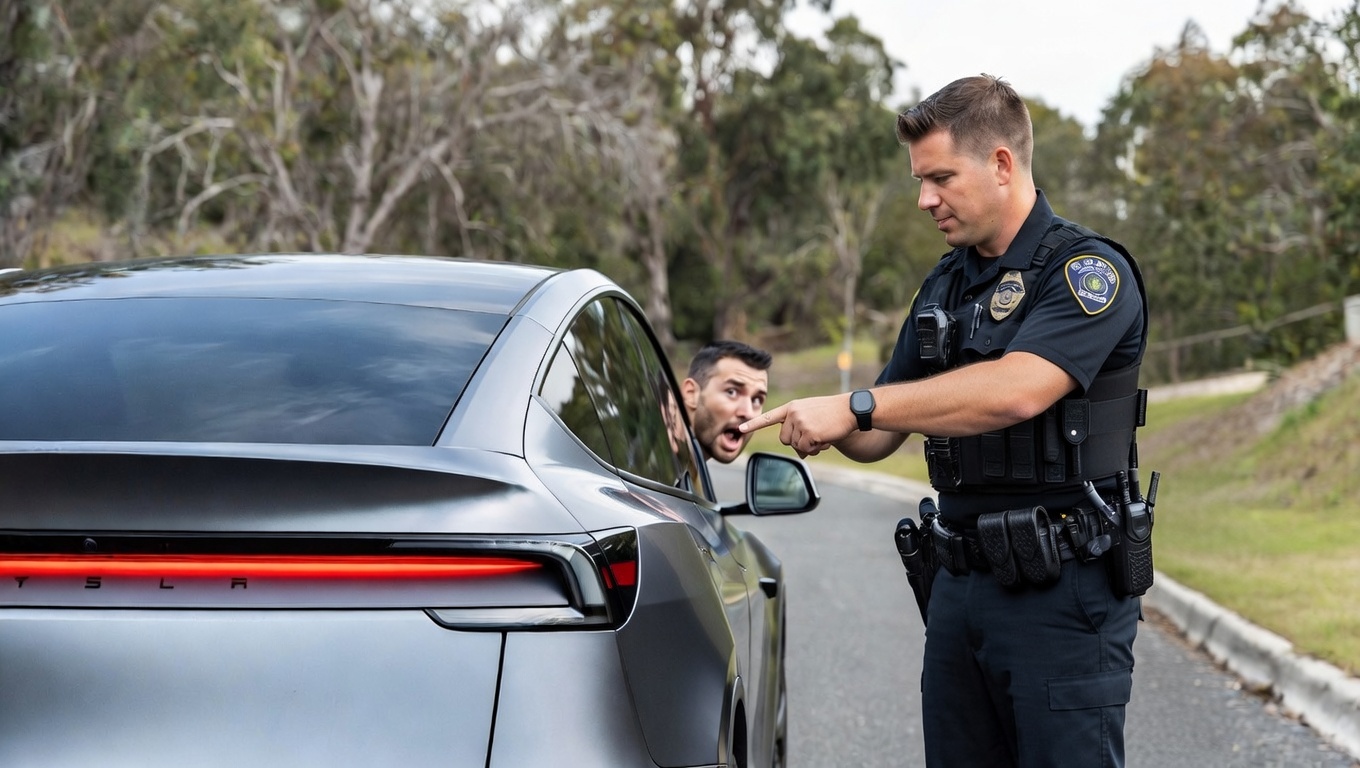
Tesla Model Y received a slew of both interior and exterior upgrades when the company refreshed its best-selling vehicle last year.
However, one of the more notable changes from an exterior perspective landed a driver in hot water with a local police officer, who was confused about the situation with the taillight bar and its ability to alert other drivers of a reduction in speed.
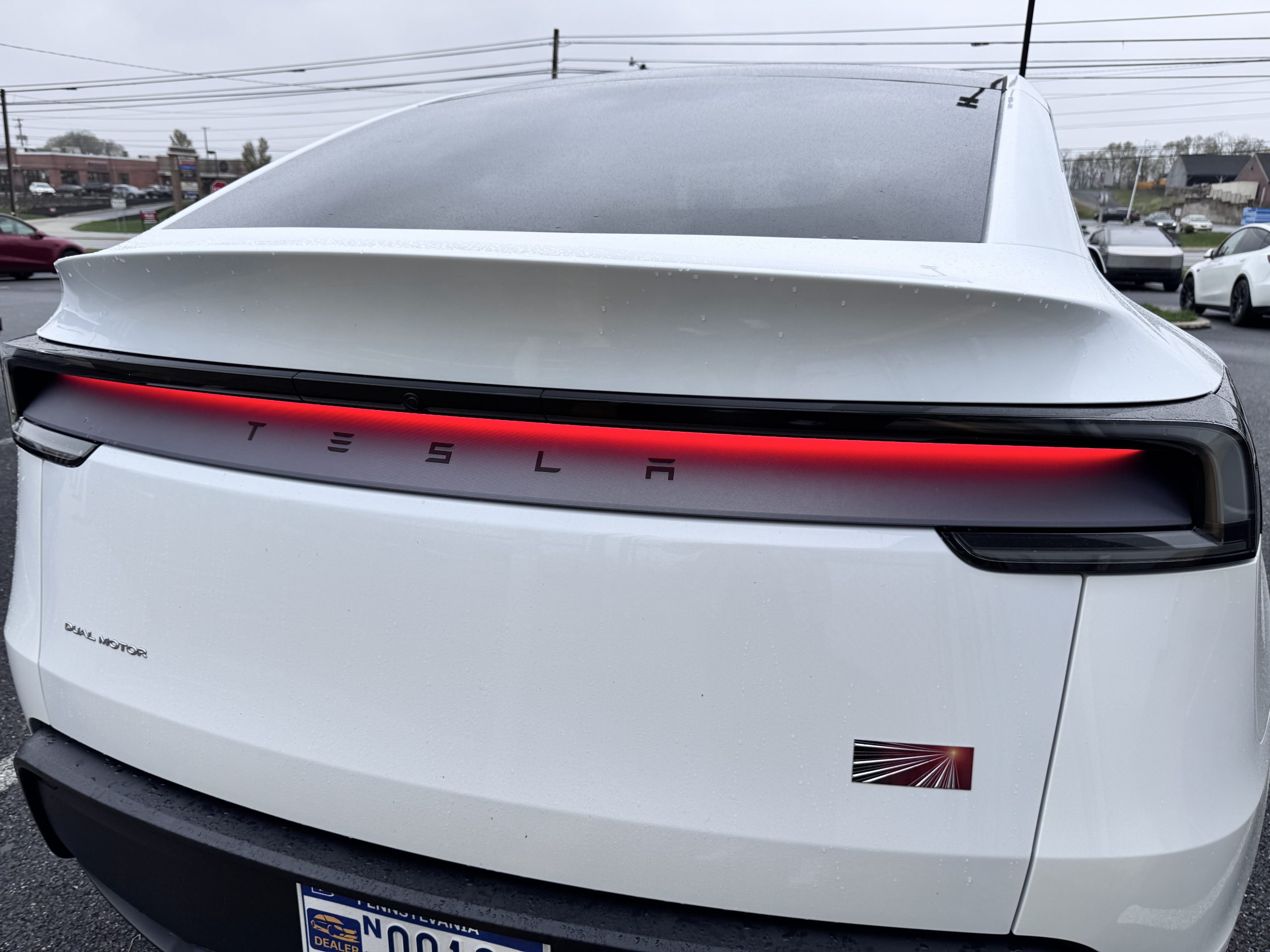
The new Tesla Model Y taillight with taillight glow
A Tesla Model Y owner in Indiana recently noted in a Facebook post that he was pulled over because a police officer thought the vehicle’s taillights were not turned on. However, the Model Y’s new rear light bar, which spans across the entire width of the vehicle, is more than visible in both light and dark conditions.
The incident, which was first spotted by Tesla Oracle, brings to light the interesting changes and perception of vehicle design that Tesla has brought forth with the new Model Y. We know some things might be head-scratching to some drivers, notably the Matrix Headlight technology present on the car, but this one truly baffled us.
The post stated:
“Just got pulled over for my tail lights not being “on” i told the officer it’s brand new. It has 1100 miles. I told him the red light bar is the taillight. The brake lights, both turn signals, and the red bar was on/worked. He told me that where the brake lights are, it should be illuminated there also. He gave me a warning and told me to get it fixed. Had anyone else had this kind of issue?”
Having the police officer tell a driver to “get it fixed” when it is a completely legal and functional design is pretty crazy.
However, the rear taillight bar, which glows and really gives the new Model Y a distinct difference between its previous iteration, is more than recognizable as a brake light and an indication of a reduction in speed.
Regulatory language for vehicle designs indicates that the light has to reach a certain number of lumens, or brightness. Lars Moravy indicated this on an episode of Jay Leno’s Garage when he and Tesla Chief Designer Franz von Holzhausen explained some of the details of the new Model Y.
This issue sparks some interesting dialogue people can have about vehicle design, and as more and more companies are adopting these futuristic looks, it seems law enforcement will have to get with the times and familiarize themselves with the regulations regarding exterior lights.








